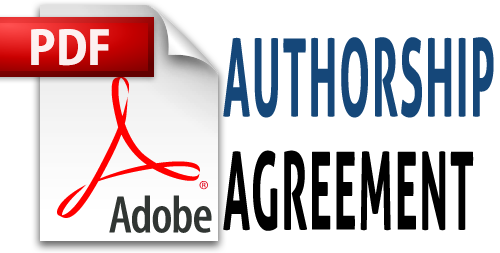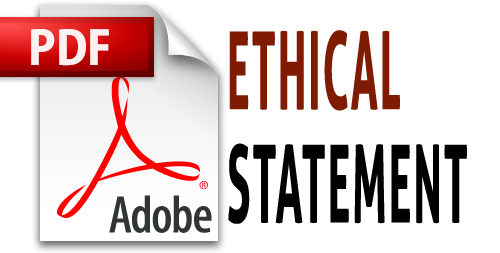PENGEMBANGAN MEDIA PEMBELAJARAN KIMIA MENGGUNAKAN MEDIA LABORATORIUM VIRTUAL BERDASARKAN PARADIGMA PEMBELAJARAN DI ERA GLOBAL
 Kusumawati Dwiningsih(1*),
nFn Sukarmin(2),
nFn Muchlis(3),
Pipit Tri Rahma(4)
Kusumawati Dwiningsih(1*),
nFn Sukarmin(2),
nFn Muchlis(3),
Pipit Tri Rahma(4)
(1) UNESA Surabaya
(2) Jurusan Kimia UNESA Surabaya
(3) Jurusan Kimia UNESA Surabaya
(4) Jurusan Kimia UNESA Surabaya
(*) Corresponding Author
 Abstract viewed : 7718
|
Abstract viewed : 7718
|  PDF downloaded : 2102
PDF downloaded : 2102
Abstract
This research and development aims to develop appropriate virtual laboratory-based chemical instructional media in the subject matter of Chemical Elements. The feasibility of chemical instructional media is based on two criteria, namely media validity based on the results of the validator's assessment and media practicality based on the results of the student response questionnaire and observation of student activities. The type of research used is Borg & Gall's research and development (R & D) and carried out in four steps, namely; investigation and data collection, planning, initial development of product formats, and initial trials. The research instruments used in this research were media review sheets, media validation sheets, student response questionnaires, and student activity observation sheets. The results show that; the media were declared valid with a very valid validity category and a validity percentage of ≥61%; The media is stated to be practical based on student response questionnaires in term of students' interest in the media were 98% and 93.33% in term of convenience understanding and use, while the results of student observation show an activity of 88.75%. Based on the results of this research, the virtual laboratory-based chemistry instructional media are feasible to be used as in the subject matter of Chemical Elements.
ABSTRAK
Penelitian dan pengembangan (R&D) ini bertujuan untuk mengembangkan media pembelajaran kimia berbasis laboratorium virtual yang layak pada materi pokok Kimia Unsur. Kelayakan media pembalajaran didasarkan pada 2 kriteria yaitu validitas media berdasarkan hasil penilaian validator dan kepraktisan media berdasarkan hasil angket respon siswa dan observasi aktivitas siswa. Jenis penelitian yang digunakan adalah penelitian dan pengembangan (R&D) Borg & Gall dan dilakukan dalam empat langkah yaitu; penyelidikan dan pengumpulan data, perencanaan, pengembangan awal format produk, dan uji coba awal. Instrumen penelitian yang digunakan pada penelitian ini adalah lembar telaah media, lembar validasi media, angket respon siswa, dan lembar observasi aktivitas siswa. Hasil penelitian menunjukan bahwa; media dinyatakan valid dengan kategori sangat valid dan presentase kevalidan ≥61%; Media dinyatakan praktis berdasarkan angket respon siswa dalam hal ketertarikan siswa terhadap media diperoleh presentase 98% dan 93,33% dalam hal kemudahan pemahaman dan penggunaan, sementara hasil observasi aktivitas siswa sebesar 88,75%. Berdasarkan hasil penelitian tersebut, maka media pembelajaran berbasis laboratorium virtual layak digunakan sebagai media pembelajaran pada materi pokok Kimia Unsur.
Keywords
References
Arsyad, Azhar. 2015. Media Pembelajaran. Jakarta: PT Raja Grafindo Persada
Bruner, J. 2004. Where M& A Pays and Where It Strays: A Survey of the Research. Journal of Applied Corporate Finance, Vol. 16 (4). pp 63-76. http://doi.org/10.1111/j.1745-6622.2004.00007.x
Chen, C., Jones, K. T., & Xu, S,. 2015. The Association Between Students Style of Learning Preferences, Social Presence, Collaborative Learning and Learning Outcome. Journal of Educators (Online). Vol. 15 (1) 2018. https://doi.org/10.9743/JEO2018.15.1.3
Dalton, M. A. P. L. V. 2016. General Chemistry 1045 Laboratory Manual. In Virginia Polytechnic Institute and State University. https://doi.org/10.1177/0091270007300953
Del Carlo, D. I., & Bodner, G. M,. 2004. Students’ Perceptions of Academic Dishonesty in the Chemistry Classroom Laboratory. Journal of Research in Science Teaching. Vol. 41 (1) Januari 2004. pp. 47-64. https://doi.org/10.1002/tea.10124
Dobrzański, L. A., & Honysz, R. 2011. Virtual examinations of alloying elements influence on alloy structural steels mechanical properties, Journal of Achievements in Materials and Manufacturing Engineering Vol. 49 No. 2, pp. 251–258. http://jamme.acmsse.h2.pl/papers_vol49_2/49216.pdf
Fiedler, M., & Haruvy, E. 2009. The lab versus the virtual lab and virtual field-An experimental investigation of trust games with communication. Journal of Economic Behavior and Organization. Vol. 72, No. 2, pp. 716-724. https://doi.org/10.1016/j.jebo.2009.07.013
Gall, M. D., Borg, W. R., & Gall, J. P. 1996. Educational research: An introduction (6th ed). New York, England: Longman Publishing.
Gall, M. D., Borg, W. R., & Gall, J. P. 2006. Educational research: an Introduction (8th ed.). New York: Logman Inc.
Gall, M. D., Gall, J. P., & Borg, W. R. 2007. An Introduction to Educational Design Research. Boston: Pearson/Allyn & Bacon
Heinich, R. 1984. The Proper Study of Instructional Technology. Educational Comunication and Technology Journal. Vol. 32. No. 2pp. 67-88.
Ismail. I, Anna Permanasari, & Setiawan, W. 2016. Efektivitas Virtual Lab Berbasis STEM dalam Meningkatkan Literasi Sains Siswa dengan Perbedaan Gender. Jurnal Inovasi Pendidikan IPA. Vol, 2, No. 2, hal. 190-201
Lafarge, D. L., Morge, L. M., & Méheut, M. M. 2014. A new higher education curriculum in organic chemistry: What questions should be asked? Journal of Chemical Education. Vol. 91 No.2. pp. 173-178, https://doi.org/10.1021/ed300746e
Leow, F.-T., & Neo, M. 2015. Redesigning for Collaborative Learning Environment: Study on Students’ Perception and Interaction in Web 2.0 Tools. Procedia-Social and Behavioral Sciences. Vol. 176 (2015) pp. 186-193, https://doi.org/10.1016/j.sbspro.2015.01.460
Liu, D., Valdiviezo-Díaz, P., Riofrio, G., Sun, Y. M., & Barba, R. 2015. Integration of Virtual Labs into Science E-learning. Procedia Computer Science. Vol. 75 (2015) pp. 95-102, https://doi.org/10.1016/j.procs.2015.12.224
Mahanta, A., & Kumar Sarma, K. 2012. Online Resource and ICT-Aided Virtual Laboratory Setup. International Journal of Computer Applications, Vol 52, Issue 6 (0975–8887). https://doi.org/10.5120/8210-1622
Manikowati, Iskandar, D., 2018. Pengembangan Mobile Virtual Laboratorium Untuk Pembelajaran Praktikum Siswa SMA. Kwangsan : Jurnal Teknologi Pendidikan, 6(1), 23. DOI: https://doi.org/10.31800/jtp.kw.v6n1.p23--42
Martínez, G., Naranjo, F. L., Pérez, A. L., Suero, M. I., & Pardo, P. J. 2011. Comparative Study of The Effectiveness of Three Learning Environments: Hyper-realistic Virtual Simulations, Traditional Schematic Simulations and Traditional Laboratory. Physical Review Special Topics-Physics Education Research, Vol 7(2), pp. 1–12. https://doi.org/10.1103/PhysRevSTPER.7.020111
McLeod, S. 2012. Bruner - Learning Theory in Education, Simply Psychology. https://www.simply-psychology.org/bruner.html
Morozov, M., Tanakov, A., Gerasimov, A., Bystrov, D., & Cvirco, E. 2004. Virtual chemistry laboratory for school education. Proceedings-IEEE International Conference on Advanced Learning Technologies, ICALT, 31 Agustus-1 september 2004. https://doi.org/10.1109/ICALT.2004.1357486
Paivio, Allan. 2013. Dual coding theory, word abstractness, and emotion: A critical review of Kousta et al.” Journal of Experimental Psychology. Vol. 142 (1), pp. 282-287. http://doi.org/10.1037/a0027004
Purnomo, A., Ratnawati, N., & Aristin, N. F. 2016. Pengembangan Pembelajaran Blended Learning Pada Generasi Z. Jurnal Teori dan Praksis Pembelajaran IPS. Vol. 1, No. 1, hal. 70-77, http://doi.org/10.17977/jtp2ips.v1i1.5
Pyatt, K., & Sims, R. 2012. Virtual and Physical Experimentation in Inquiry-Based Science Labs: Attitudes, Performance and Access. Journal of Science Education and Technology. Vol. 21, No. 1, pp. 133-147, https://doi.org/10.1007/s10956-011-9291-6
Sangsawang, T. 2015. Instructional Design Framework for Educational Media. Procedia-Social and Behavioral Sciences. Vol. 176 Feb 2015, pp. 65-80. https://doi.org/10.1016/j.sbspro.2015.01.445
Schnotz, W., Baadte, C., Johnson, A., & Mengelkamp, C. 2012. Knowledge acquisition from verbal and pictorial information. In J. Kirby & M. Lawson (Eds.), Enhancing the Quality of Learning: Dispositions, Instruction, and Learning Processes (pp. 339-365). Cambridge: Cambridge University Press. http://doi.org/10.1017/CBO9781139048224.019
Sirhan, G. 2007. Learning Difficulties in Chemistry. Journal of Turkish Science Education, Vol. 4, (2007) pp. 2–20.
Sjöström, J., & Talanquer, V. 2014. Humanizing chemistry education: From simple contextualization to multifaceted problematization. Journal of Chemical Education. Vol. 91, No. 8, pp. 1125-1131. https://doi.org/10.1021/ed5000718
Suprapto,N., Abidah, A., Dwiningsih, K., Jauhariyah, M. N. R., & Saputra, A. 2018. Minimizing Misconception of Ionization Energy TThrough three-tier Diagnostic Test. Periodico Tche Quimica.Vol. 15 (30): pp. 387-396.
Tatli, Z., & Ayas, A. 2010. Virtual laboratory applications in chemistry education. Procedia - Social and Behavioral Sciences. Vol.9, (2010), pp. 938-942. https://doi.org/10.1016/j.sbspro.2010.12.263
Ulil Arham, U., & Dwiningsih, K. 2016. Kelayakan Multimedia Interaktif Berbasis Blended Learning Pada Materi Pokok Kimia Unsur. Unesa. Journal of Chemical Education. Vol. 5, No.2, pp.345-352, May 2016
Wu, Y. T. 2013. Research trends in technological pedagogical content knowledge (TPACK) research: A review of empirical studies published in selected journals from 2002 to 2011. British Journal of Educational Technology. Vol. 44, No. 3 pp. E73-E76. https://doi.org/10.1111/j.1467-8535.2012.01349.x
Yusuf, I., Widyaningsih, S. W., & Purwati, D. 2015. Pengembangan Perangkat Pembelajaran Fisika Modern Berbasis Media Laboratorium Virtual Berdasarkan Paradigma Pembelajaran Abad 21 Dan Kurikulum 2013. Jurnal Pancaran Pendidikan. Vol. 4 No. 2 (2015), pp. 189-200
Refbacks
- There are currently no refbacks.
Copyright (c) 2018 Kusumawati Dwiningsih, nFn Sukarmin, nFn Muchlis, Pipit Tri Rahma

This work is licensed under a Creative Commons Attribution-NonCommercial 4.0 International License.
Kwangsan Indexed By
Kwangsan: Jurnal Teknologi Pendidikan diterbitkan oleh Balai Besar Guru Penggerak (BBGP) Prov. Jawa Timur.
Kementerian Pendidikan dan Kebudayaan
Alamat Redaksi:
Jl. Mangkurejo, Ds. Kwangsan, Sedati - Sidoarjo.
Telp 0318911373 Fax. 0318911392
Email: jurnal.kwangsan@kemdikbud.go.id & jurnalkwangsan@dikbud.belajar.id






























